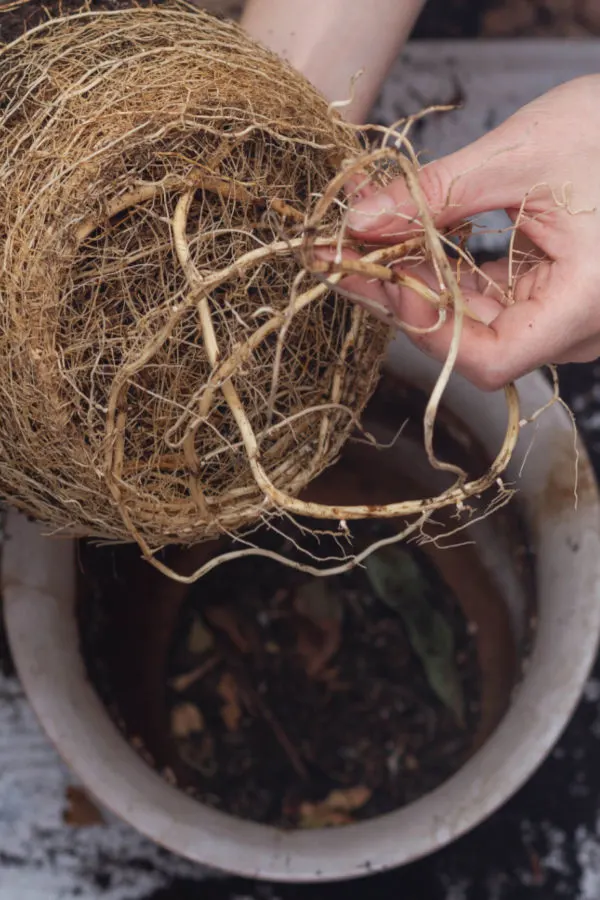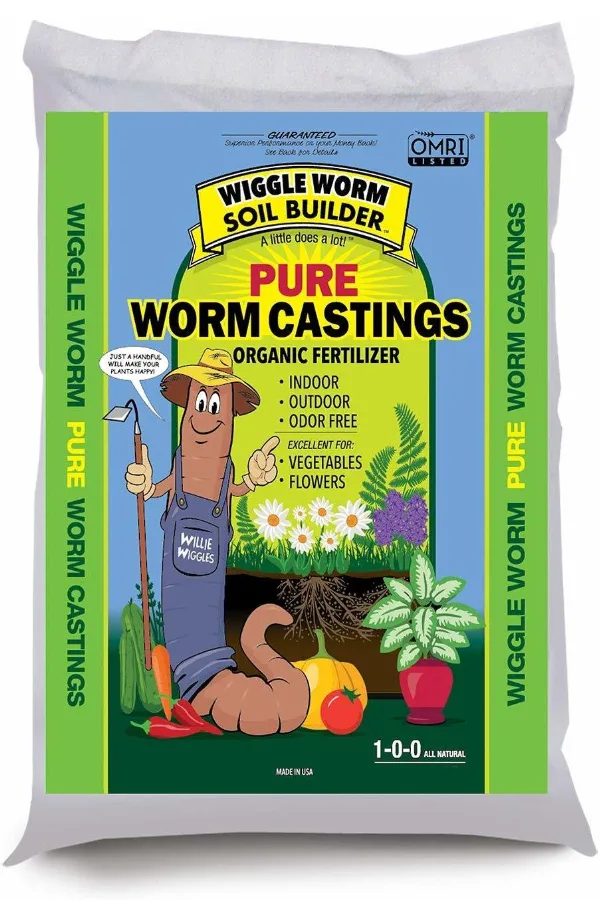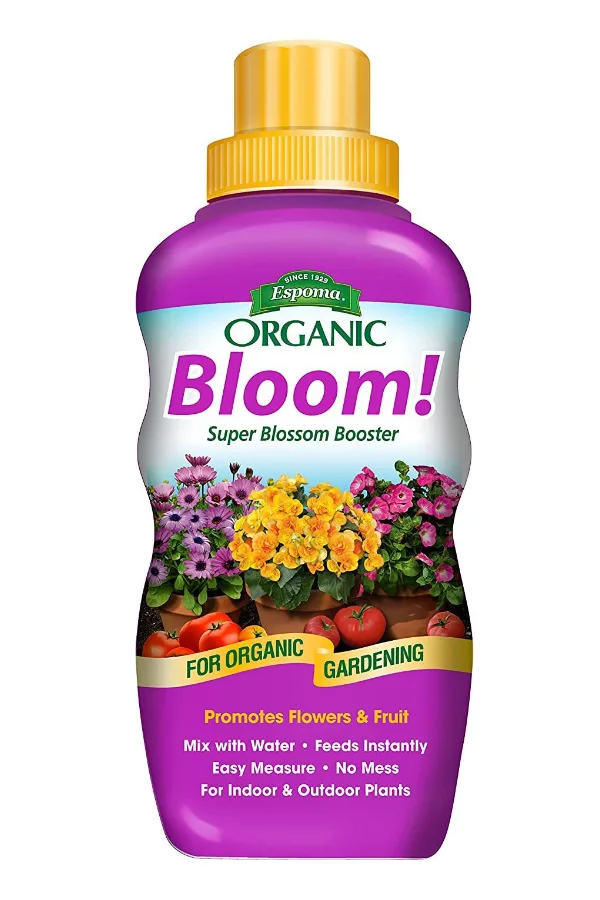Looking for how to best fertilize your potted flowers for blooms that are not only big and beautiful – but last all season long?
Potted flowers are one of the easiest ways to add a huge splash of color nearly anywhere in the landscape. They are perfect for bringing big interest and color to patios, porches and decks. They also happen to look just as good at entrances or along paths, adding even more beauty to your home.
Perhaps best of all, when growing flowers in containers, there isn’t the constant chore of pulling weeds! After all, when you grow in pots, the chores of planting and maintaining are pretty easy. Especially when you compare it to digging, weeding and even mulching large flowerbed spaces.

But if there is one drawback to growing flowers in containers, it’s trying to keep the plants in your pots blooming and booming from late spring until fall. Let’s face it, as good as flowering pots look in full bloom – they can be quite uninviting when the plants growing in them begin to fade or fail.
The good news is that keeping your flowers blooming big doesn’t need to be difficult or time consuming. In fact, by simply giving them the energy and nutrients they need on a consistent basis (along with proper water too!), it’s actually quite easy to keep your plant healthy right up until the first frost in late fall.
With that in mind, here is a look at the simple secrets to fertilizing the flowers growing in your containers, and how to make sure they flower bigger and longer than ever this year!
How To Fertilize Potted Flowers
If there is one major secret to success when fertilizing potted flowers, it’s that low and slow power is far better than providing your plants with big jolts of energy once a month.
Whether you grow in small pots, hanging baskets or even large containers – they all have limited space for the roots to grow in their vessel. Unfortunately, if you provide too much energy to the plants, their roots will grow too fast.

When this happens, the plants quickly become root bound. And once a plant’s roots become overcrowded, they will begin to fail in short order. This is because a root bound plant is unable to absorb fertilizer or water. Instead, they both simply pass right through the container, and the plant slowly dies off.
If you have ever went to water your plant and the water either spills off the top or runs immediately through and out the bottom drainage holes, it’s very likely your plant is root bound.
Once this occurs, your only option is to replant into a larger space with more soil. That of course can not only be time consuming, but costly as well. But this issue can be avoided, and it all starts with fertilizing your plants for slow but steady growth.
The easiest way to do this is to provide your flowering plants with lower doses of energy, but on a more regular basis. And even more, by using a fertilizer that will power blooms, and not just foliage growth!
Selecting The Best Fertilizer For Potted Flowers
A One-Two Punch Approach To Fertilizing Potted Flowers
So what is the best fertilizer to use for annual flowers growing in containers? Should it be a liquid all purpose fertilizer? Or perhaps a slow-release granular type? The best and most effective choice is actually to use a combination of both!
Listen To Our Podcast Below On How To Keep Your Hanging Baskets Beautiful All Summer Long!
Slow release granular fertilizers break down a little at a time. Because of this, they power plants over the long haul. That is actually perfect for potted flowers and can help keep them growing well, but at a slower and more steady pace.
Liquid fertilizers give a far faster boost of energy. Because they are in a liquid form, they absorb both through the roots and through the leaves. As you will see below, both have their place in helping to power your container plants to great results.
For granular fertilizers, select an all-purpose, balanced fertilizer to feed your potted plants once a month. There are several choices when it comes to granular feeding, but one of the best all-natural choices of all to use are worm castings.
Worm castings contain a nearly perfect blend of trace nutrients that can slowly power potted plants. When applied once a month to plants, they slowly release their energy every time it rains or you water as the nutrients leach down into the soil and absorb into the roots.

How much to use will depend on the size of your container. For mid to large pots (12 to 18 inches in diameter), a quarter to one-half cup of castings will give just the right power. For overly large pots and containers, a full cup will do the trick. Affiliate Product Link: 100% Pure Worm Castings
Using Traditional Granular Fertilizers – How To Fertilize Potted Flowers
You can also use commercially available granular fertilizers in place of worm castings. Look for fertilizers in this category that are balanced and contain a near equal rate of Nitrogen, Phosphorous and Potassium. This will keep plants growing at a more steady pace but not overload them with too much nitrogen.
Nitrogen is important for sure, but too much will promote more foliage growth than blooms. When feeding with a commercial granular fertilizer do so at only 1/2 of the rate of the recommended feeding. See: Understanding N-P-K Ratios To Select The Best Fertilizer For Your Plants
By cutting the feeding in half, you will still give enough power to the plant for good foliage growth and production. The half dose also will help the plant have enough energy for blooming as well. But by reducing the feeding to half, it most importantly keeps it from overpowering root and plant growth.
Liquid Fertilizing Potted Flower Plants
In addition to once a month granular feedings, more frequent (but still light) doses of liquid fertilizer will do the trick when it comes to keeping your plants blooming strong.

Liquid fertilizers provide a faster punch of power to plants than granular fertilizers. And when they contain the right nutrients, nearly all of that power can go to producing more blooms and flowers, and not too much growth.
Fertilizing With The Right Liquid Power
When selecting a liquid fertilizer, choose one that has a higher rate of phosphorous than nitrogen. Why? As noted earlier, nitrogen will power stem and foliage growth. And, too much of it will lead to big green plants with a lot of leaves but little to no blooms.
Phosphorous, on the other hand, powers blooms. And by feeding your plants more of it, it will help the blooms and flowers to keep on producing all summer long.
For best results, look for liquid fertilizers that contain a higher middle number on the N-P-K scale. Apply the liquid boost every ten to fourteen days. If using an organic product with a lower N-P-K ratio, use at full strength. Affiliate Product Link : Espoma Organic Bloom Booster
For liquid fertilizers with higher percentages, use at half strength.This will once again keep your plants from overgrowing too fast! The best part of liquid fertilizing is that it can be done as part of watering your plants – so other than mixing up the solution, it couldn’t be easier – here is to powering your potted flowers like never before this year!
Follow Our Facebook Page For Great Gardening Tips And Advice! This Is My Garden Facebook Page
This Is My Garden is a garden website created by gardeners, for gardeners. Jim and Mary Competti have been writing gardening, DIY and recipe articles and books and speaking for over 15 years from their 46 acre Ohio farm. They publish three articles every week, 52 weeks a year. Sign up today to follow via email, or follow along!
